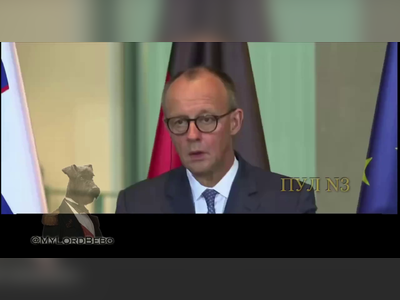
Hungary Faces Rising Fuel Prices Amidst Currency Fluctuations and Global Economic Challenges
The Hungarian forint experiences volatility, while global oil prices and regional economic factors contribute to significant fuel price increases.
The Hungarian government has reported a notable increase in fuel prices, influenced by global economic conditions and currency fluctuations.
Initially, the Hungarian forint showed signs of recovery against the euro, reaching near the psychological threshold of 410 HUF/EUR midweek, following a weaker start to the week at 414 HUF/EUR.
However, by Friday, the currency had corrected back towards its early-week levels.
Against the US dollar, the forint maintained some strength, closing around 400-401 HUF/USD, improving from over 406 HUF/USD on Monday.
Regős Gábor, lead analyst at Gránit Alapkezelő, noted that while the forint remained weak, one factor contributing to its midweek strengthening was positive retail data, despite industrial performance aligning with expectations and not adversely affecting the market.
Globally, the German economy contracted by 0.2% in 2024 for the second consecutive year, attributed mainly to industrial weakness, a development of concern for Hungary as Germany is its largest trade partner.
Domestically, Hungarian construction output fell by 1.7% compared to the previous year, with inflation increasing to 4.6% in December, surpassing market expectations, as highlighted by Rodic Ádám from the MBH Analysis Center.
Varga Zoltán, senior analyst at Equilor Investment Ltd., emphasized the unexpected inflation figures, noting potential limitations on the Hungarian central bank's ability to continue interest rate cuts.
The next central bank meeting is scheduled for January 28.
Global oil prices began the week at $80.5 per barrel, dipping slightly before rising to $82 and stabilizing around $80-81, driven partly by the outgoing Biden administration’s sanctions against the shadow fleet shipping Russian oil, reducing global supply and pushing prices higher.
The Hungarian Ministry of Economy also pointed out that American sanctions and Ukrainian conflicts are jointly contributing to the increase in fuel prices.
Significantly, these developments compel China and India, major global oil importers, to seek alternative sources, increasing raw material costs and logistics expenses.
In recent months, the price of Brent crude oil saw a near 10% increase.
Regionally, the suspension of the Druzhba and Turkish Stream pipelines due to the Russia-Ukraine conflict places additional strain on Hungary’s energy supply, affecting local fuel pricing.
Hungary imports 20-30% of its fuel, making it sensitive to external market pressures.
The Hungarian government has committed to stabilizing fuel prices domestically to prevent them from exceeding those of neighboring countries, citing average prices recently provided by the European Commission.
Currently, Hungarian petrol prices are marginally lower, while diesel prices slightly exceed regional averages.
Looking ahead, several economic indicators are anticipated to influence the forint's trajectory in the coming week, including German producer prices and the European auto registration data for December, crucial due to Hungary’s significant automotive industry.
Moreover, international attention next week will focus on global events such as Donald Trump’s inauguration, which is expected to impact market dynamics alongside the World Economic Forum in Davos.
The euro-forint exchange rate is currently expected to move within the 405-417 band, with the dollar-forint range anticipated between 395-410.
On the stock market, Hungary’s BUX index demonstrated strong performance, consistently surpassing records and showing resilience amidst mixed performances on international exchanges.
Notable developments included historical highs for OTP and significant mid-week gains for Mol, while Richter and Telekom stocks also saw notable price movements.
Initially, the Hungarian forint showed signs of recovery against the euro, reaching near the psychological threshold of 410 HUF/EUR midweek, following a weaker start to the week at 414 HUF/EUR.
However, by Friday, the currency had corrected back towards its early-week levels.
Against the US dollar, the forint maintained some strength, closing around 400-401 HUF/USD, improving from over 406 HUF/USD on Monday.
Regős Gábor, lead analyst at Gránit Alapkezelő, noted that while the forint remained weak, one factor contributing to its midweek strengthening was positive retail data, despite industrial performance aligning with expectations and not adversely affecting the market.
Globally, the German economy contracted by 0.2% in 2024 for the second consecutive year, attributed mainly to industrial weakness, a development of concern for Hungary as Germany is its largest trade partner.
Domestically, Hungarian construction output fell by 1.7% compared to the previous year, with inflation increasing to 4.6% in December, surpassing market expectations, as highlighted by Rodic Ádám from the MBH Analysis Center.
Varga Zoltán, senior analyst at Equilor Investment Ltd., emphasized the unexpected inflation figures, noting potential limitations on the Hungarian central bank's ability to continue interest rate cuts.
The next central bank meeting is scheduled for January 28.
Global oil prices began the week at $80.5 per barrel, dipping slightly before rising to $82 and stabilizing around $80-81, driven partly by the outgoing Biden administration’s sanctions against the shadow fleet shipping Russian oil, reducing global supply and pushing prices higher.
The Hungarian Ministry of Economy also pointed out that American sanctions and Ukrainian conflicts are jointly contributing to the increase in fuel prices.
Significantly, these developments compel China and India, major global oil importers, to seek alternative sources, increasing raw material costs and logistics expenses.
In recent months, the price of Brent crude oil saw a near 10% increase.
Regionally, the suspension of the Druzhba and Turkish Stream pipelines due to the Russia-Ukraine conflict places additional strain on Hungary’s energy supply, affecting local fuel pricing.
Hungary imports 20-30% of its fuel, making it sensitive to external market pressures.
The Hungarian government has committed to stabilizing fuel prices domestically to prevent them from exceeding those of neighboring countries, citing average prices recently provided by the European Commission.
Currently, Hungarian petrol prices are marginally lower, while diesel prices slightly exceed regional averages.
Looking ahead, several economic indicators are anticipated to influence the forint's trajectory in the coming week, including German producer prices and the European auto registration data for December, crucial due to Hungary’s significant automotive industry.
Moreover, international attention next week will focus on global events such as Donald Trump’s inauguration, which is expected to impact market dynamics alongside the World Economic Forum in Davos.
The euro-forint exchange rate is currently expected to move within the 405-417 band, with the dollar-forint range anticipated between 395-410.
On the stock market, Hungary’s BUX index demonstrated strong performance, consistently surpassing records and showing resilience amidst mixed performances on international exchanges.
Notable developments included historical highs for OTP and significant mid-week gains for Mol, while Richter and Telekom stocks also saw notable price movements.
AI Disclaimer: An advanced artificial intelligence (AI) system generated the content of this page on its own. This innovative technology conducts extensive research from a variety of reliable sources, performs rigorous fact-checking and verification, cleans up and balances biased or manipulated content, and presents a minimal factual summary that is just enough yet essential for you to function as an informed and educated citizen. Please keep in mind, however, that this system is an evolving technology, and as a result, the article may contain accidental inaccuracies or errors. We urge you to help us improve our site by reporting any inaccuracies you find using the "Contact Us" link at the bottom of this page. Your helpful feedback helps us improve our system and deliver more precise content. When you find an article of interest here, please look for the full and extensive coverage of this topic in traditional news sources, as they are written by professional journalists that we try to support, not replace. We appreciate your understanding and assistance.









